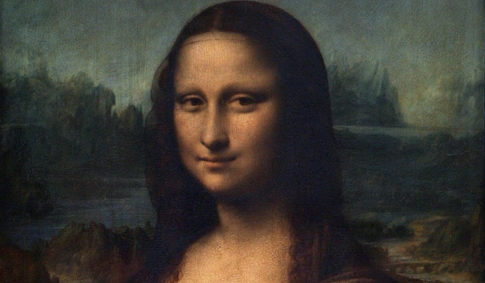
04
2011Mona Lisa Is Trans!
Yes, that Mona Lisa!
It is the considered opinion of some art historians that the main influence and model for Da Vinci’s Mona Lisa was, in fact a male apprentice named Gian Giacomo Caprotti, and known as Salai. He worked with Leonardo for 25 years starting in 1490, and most art historians agree Salai was a lover of Da Vinci’s.
It has commonly been accepted that the woman who sat for the portrait is Lisa Gheradini, the wife of a merchant who supposedly commissioned the painting.
But, Silvano Vinceti, chairman of the Italian National Committee for Cultural Heritage and head of a team of researchers who have studied the painting, believes this long-held theory isn’t correct.
Vinceti said similarities with the “Mona Lisa’s” nose and mouth are striking.
“Salai was a favorite model for Leonardo,” he said. “Leonardo certainly inserted characteristics of Salai in the last version of the Mona Lisa, which was painted over several years and obviously was subject to different influences and inspiration.
Several Leonardo works, including “St. John the Baptist” and a lesser-known drawing called “Angel Incarnate,” were based on Salai, and show a slender, effeminate young man with long auburn curls.
Even the experts that dispute this interpretation admit that Leonardo tended to androgynize his portraits… ahem… in order to idealize their beauty! Wow!
“All Leonardo subjects look like each other because he represents an abstract ideal of beauty. Therefore they all have this dual characteristic of masculine and feminine,” said Marani, an art professor at Milan’s Politecnico university.
“The work began as the portrait of Lisa Gherardini, but over the years in Leonardo’s hands it slowly turned into something else: an idealized portrait, not a specific one,” Marani said. “That’s also why you have this fascinating face that transcends time and transcends a specific person, and why all these theories keep piling up.”
Hmmm… “an abstract ideal of beauty…” a face that transcends time…” Finally, an accurate official description of us. ![]()






Linda Marie Daniels
Intriguing theory and a really fun post.
I’ve read several guesses about the Mona Lisa smile (including that it’s the smile of a woman who has just learned she’s pregnant or who has just learned she’s NOT pregnant) but this has officially become my favorite theory of the model for the painting (not that I’m biased).
I don’t think I’ll ever look at the Mona Lisa in quite the same way.